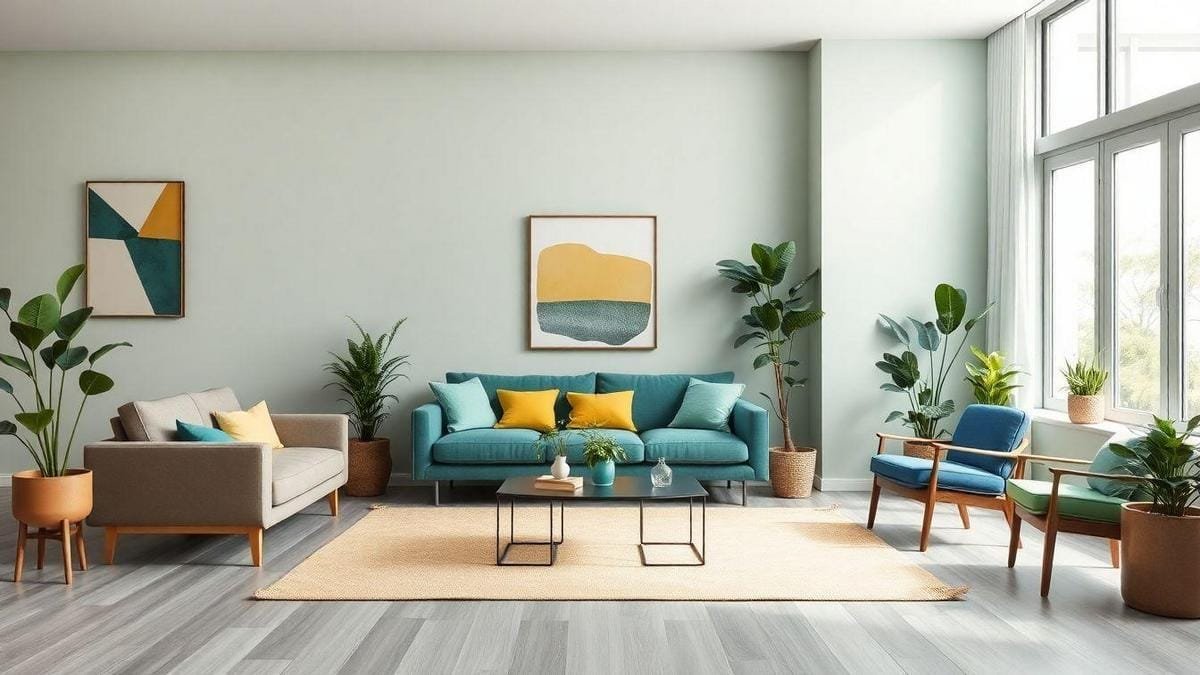Listen to this article
Have you ever thought about how colors impact your emotions and perception of an environment? In this article, we will explore the color psychology in architecture and construction. Discover how professionals in this field use different shades to create specific sensations. Colors can make spaces more welcoming, relaxing or energizing. Learn how color choices add value and transform environments. Get ready to see your design decisions in a new way!
- Color psychology affects human emotions and behavior.
- Alert colors are good for environments that demand attention.
- Light tones bring relaxation and warmth.
- Light colors make spaces appear larger.
- Applying the right colors enhances and highlights rooms.
The Influence of Colors in Architecture and ConstructionUnderstanding the Psychology of Colors
Have you ever thought about how colors that you see on a daily basis can affect your mood and emotions? A color psychology investigates how different shades impact our feelings and perception of environments. When we enter a space, the colors around us can provoke emotional reactions and influence our behavior.
The importance of colors in environments
Imagine designing a new space, be it a home, office or business. The choice of colors is fundamental to creating the desired atmosphere. Colors can stimulate creativityIt can also promote relaxation or increase productivity. Each color has its own meaning and evokes specific sensations.
For example, to transmit tranquilityshades of blue and green are ideal. If the goal is a more energetic, consider orange and yellow.
Colors and Emotions: What You Need to Know
How Colors Affect Mood
Colors embellish a space and shape it. emotional experience of those who use it. Studies show that different colors provoke different emotional reactions.
- Blue: Transmits calm and serenity.
- Red: Stimulates energy and passion.
- Green: Associated with nature and renewal.
- Yellow: Evokes joy and optimism.
When planning an environment, consider that colors impact your perception and that of others who frequent the place.
The Impact of Colors on the Perception of Space
Colors change the perception of the size of a room. Dark tones can make a space seem smallerwhile light colors create a feeling of range. For a more spacious room, opt for whites, beiges and other light shades.
Warm colors, such as orange and yellow, reflect more light, making rooms more illuminated. Cool tones create a feeling of intimacyideal for bedrooms and living rooms.
Applying Color Psychology to Architectural Projects
Choosing the Right Colors
When designing a space, choose colors strategically. Think about how each shade affects the feeling you want to create. Here are some tips:
- Work environments: Opt for colors that stimulate concentration and productivity. Blue and green are great options.
- Relaxation Spaces: For living rooms or bedrooms, choose tones that promote comfortsuch as soft greys or pastel greens.
- TradeUse colors that attract attention, such as red or yellow, balancing them with neutral tones so as not to overload the room.
Creating Cozy Environments
For a space to be welcoming and inviting, consider earthy tones such as browns and greens. These colors have a comforting effect and make people feel more at ease.
What's more, by using warm colors with decorative elements, you can highlight specific areas and create a dynamic space.
External Colors: The First Impression
The Importance of Colors on the Façade
The colors chosen for the outside of a building are crucial. They affect the aesthetics and convey a message about what people can expect from the interior.
- Light colorsThey convey a feeling of range e openingideal for inviting façades.
- Cool colorsBlue and green transmit tranquility e securitymaking people feel comfortable approaching you.
Façade Tips
Consider the following when choosing colors for the outside of a project:
- Use colors that harmonize with your surroundings.
- Think about the maintenance and durability of the colors, as exposure to the sun and bad weather can affect them.
- Experiment with color combinations that create interesting and attractive contrasts.
The Impact of Colors on Quality of Life
How Colors Influence Well-Being
The choice of colors in your home or workplace can affect your quality of life. Well-designed environments that take color psychology into account contribute to emotional and physical well-being.
- Pleasant surroundingsColors that promote comfort and relaxation help to reduce stress and anxiety.
- Increased Productivity: Colors that stimulate concentration increase efficiency in the workplace.
Creating Spaces that Promote Mental Health
To improve mental health and well-being, incorporate colors that evoke positive feelings. A cheerful, vibrant space can do wonders for your mood and motivation.
Conclusion: The Power of Color in Architecture
In short, the color psychology plays a crucial role in architecture and construction. Understanding how colors affect emotions and perceptions allows us to create environments that meet functional needs and provide positive emotional experiences.
Whether you're an architect, designer or someone interested in creating a beautiful and functional space, always remember the power of color. The careful choice of shades transforms any environment, making it more welcoming, productive and pleasant.

Adalberto Mendes, a name that resonates with the solidity of concrete and the precision of structural calculations, personifies the union between engineering theory and practice. A dedicated teacher and owner of a successful construction company, his career is marked by a passion that blossomed in childhood, fueled by the dream of erecting buildings that would shape the horizon. This early fascination led him down the path of engineering, culminating in a career where the classroom and the construction site complement each other, reflecting his commitment both to training new professionals and to bringing ambitious projects to fruition.

